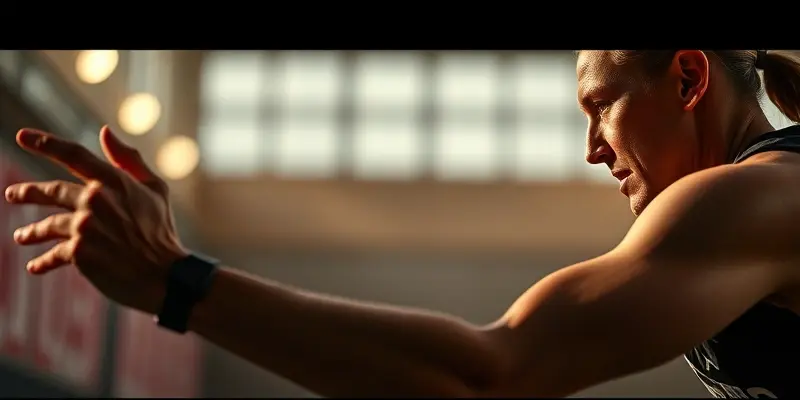Chris Froome’s Comeback: Science-Backed Strategies for Injury Recovery and Prevention
In the world of elite cycling, few names shine as brightly as Chris Froome. When he crashed in 2019, suffering multiple fractures, many doubted he’d ever compete again—let alone at Tour de France level. But Froome’s persistent, science-driven approach to rehabilitation has become a gold standard for athletes and fitness enthusiasts. What can we learn from his journey to prevent injuries, recover faster, and stay motivated? Let’s break it down into practical, actionable steps anyone can follow.
Injury Prevention: Building Your Defense
Whether you’re a weekend warrior or training for your own racing goals, prevention is always better than cure. Froome’s accident highlighted key prevention strategies that every athlete should consider:
- Master Your Skills: Take time to build technical skills in your chosen sport. Just as Froome reviewed race courses in advance, familiarize yourself with your workout environment.
- Strength and Flexibility: Consistent core workouts, resistance training, and stretching boost resilience against both overuse and sudden injury.
- Safety Equipment & Technology: Use well-maintained equipment—helmets, shoes, bikes, or running gear. For cyclists, wearable sensors and smart trainers can monitor your workload, helping you stay in the safe zone.
Pro Tip: Create a checklist before your sessions to double-check your gear and warm-up thoroughly. Small steps add up!
Evidence-Based Recovery: The Power of a Phased Approach
After his crash, Froome followed a carefully structured, progressive rehab—mirroring modern sports medicine best practices. Here’s how you can apply similar steps:
- Professional Guidance: Work with a certified trainer or physiotherapist. They can map out a safe, incremental return to activity—starting with pain-free movements, then gradually increasing intensity.
- Listen to Your Body: Never rush. If you experience pain outside normal muscle soreness, pause and reassess.
- Sleep and Stress: Quality sleep accelerates healing, and stress management (like meditation or breathing exercises) is crucial for both physical and psychological repair.
Think about this: Would you drive a car with engine trouble on a road trip? Give your body the same respect!
For a detailed guide on structuring your recovery process, check out our injury recovery checklist that outlines essential steps for healing safely and effectively.
Nutrition: Feeding Your Recovery
Nutrition is the foundation of tissue repair and bone strength. Froome and his team tailored his diet for healing—a strategy backed by research:
- Prioritize Protein: Lean meats, dairy, beans, or quality plant protein support muscle and bone repair.
- Don’t Forget Calcium & Vitamin D: Leafy greens, fortified foods, and safe sun exposure help bones knit stronger.
- Embrace Omega-3s & Colorful Veggies: Anti-inflammatory foods like fish, nuts, and vibrant produce speed up recovery.
Sample meal: Grilled salmon, sautéed spinach, roasted sweet potatoes, and a cup of berries.
For more insights on bone health, explore our guide on calcium for bone strength to optimize your recovery nutrition.
Tools, Gadgets, and Tracking: Modern Recovery at Your Fingertips
You don’t need a pro’s budget to benefit from technology. Incorporate these tools into your routine:
- Wearable Trackers: Monitor heart rate, sleep, and training load to avoid overtraining.
- Muscle Recovery Devices: Foam rollers, massage guns, or even simple ice/heat packs boost circulation and reduce soreness.
- Accountability Apps: Log your progress and setbacks to adjust your plan with data—not just gut feeling.
Staying Mentally Strong: Harnessing Psychological Resilience
Perhaps the biggest challenge Froome faced was mental. What drives someone to start over, day after day? Here are proven techniques you can borrow:
- Set Specific, Short-Term Goals: Celebrate small milestones—every improvement is progress.
- Visualization & Mindfulness: Imagine your comeback or use mindfulness apps to stay grounded through setbacks.
- Lean on Community: Share your journey with friends, a coach, or support group for encouragement and accountability.
Remember: Mind over matter is not just a saying—it’s a science-backed strategy for long-term success.
To dive deeper into mental strategies, check out our post on visualization for healing that explores how mental imagery can accelerate recovery.
Key Takeaways: Your Recovery & Injury Prevention Checklist
- Train skills and increase workout intensity gradually.
- Prioritize strength, flexibility, and regular equipment checks.
- Fuel recovery with balanced nutrition, especially protein, calcium, and omega-3s.
- Use modern tools—wearables, massage devices, tracking apps—to measure progress.
- Set goals, stay mentally resilient, and seek professional support when needed.
Final Thoughts
Chris Froome’s story proves that comeback is possible with the right blend of patience, professional guidance, and a science-based plan. You may not be aiming for a Tour de France podium—but with these strategies, you’ll get back on your feet faster, stronger, and smarter. Stay proactive, trust the process, and remember: recovery is a journey, not a race.
Ready for your own comeback? Let’s make it happen—one step at a time.

